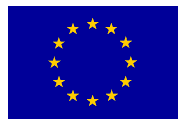The EpimiRNA consortium (formed in mid-2012), involving 16 partners from 8 European countries, the USA and Brazil has received €11.5 million funding from the European Union’s Framework Programme 7 to investigate molecular mechanisms, diagnostics and treatments for epilepsy.
 The overall objective of the EpimiRNA consortium is to explore the role of microRNAs in the development, treatment and diagnosis of temporal lobe epilepsy. Scientists will undertake the first complete analysis of microRNA changes across multiple epilepsy models and human brain tissue to identify the active or missing microRNAs in epilepsy. Experiments will then uncover the targets of these microRNAs and, using the latest computer and mathematical modelling techniques, explain how they influence brain excitability. We will look at the genetic code in patients with temporal lobe epilepsy to see if variation or errors may be changing which microRNAs are present in the brain. We will target microRNAs using gene therapy and other approaches and we will search chemical libraries for new compounds which might affect microRNA levels in cells. Seizures or the injuries that trigger epilepsy may cause the release of tiny amounts of microRNA into the bloodstream which can be detected with very sensitive machines. Clinical trials will therefore look at microRNA levels in blood samples from patients. This may lead to non-invasive tests to help doctors predict who may develop epilepsy or respond best to a particular treatment.
The overall objective of the EpimiRNA consortium is to explore the role of microRNAs in the development, treatment and diagnosis of temporal lobe epilepsy. Scientists will undertake the first complete analysis of microRNA changes across multiple epilepsy models and human brain tissue to identify the active or missing microRNAs in epilepsy. Experiments will then uncover the targets of these microRNAs and, using the latest computer and mathematical modelling techniques, explain how they influence brain excitability. We will look at the genetic code in patients with temporal lobe epilepsy to see if variation or errors may be changing which microRNAs are present in the brain. We will target microRNAs using gene therapy and other approaches and we will search chemical libraries for new compounds which might affect microRNA levels in cells. Seizures or the injuries that trigger epilepsy may cause the release of tiny amounts of microRNA into the bloodstream which can be detected with very sensitive machines. Clinical trials will therefore look at microRNA levels in blood samples from patients. This may lead to non-invasive tests to help doctors predict who may develop epilepsy or respond best to a particular treatment.
Jochen Prehn and the Centre for Systems Medicine are contributing to EpimiRNA with expertise in Systems biology. These approaches are increasingly required to tackle the complex regulation of biological function and disease processes by miRNA. miRNA target multiple mRNA, and each mRNA can be targeted by several miRNA. Recognizing this complexitiy, it is essential to integrate information on miRNA and their mRNA/protein targets as well as spatio-temporal data in the brain. This workpackage will establish an integrative computational model that allows the miRNA and target data to undergo mechanistic analysis, prediction testing, and simulation of effects on neuronal excitability.
Consortium members
The Consortium is coordinated by Professor David Henshall, Royal College of Surgeons in Ireland with Professor Felix Rosenow at Philipps University Marburg (Germany) as Co-coordinator , with the following partners: Professors Jochen Prehn, Gianpierro Cavalleri and Norman Delanty also from the RCSI in Dublin, Professors Gerhard Schratt, Carsten Culmsee and Rainer Schwarting and Karl M. Klein PhD at Philipps University Marburg (Germany), Prof. Jeroen Pasterkamp at the University Medical Center Utrecht (Netherlands), Dr Stephanie Schorge at University College London (U.K.), Prof. Paolo Fabene at the University of Verona (Italy), Prof. Hajo Hamer at Friedrich-Alexander Universität Erlangen/Nuernberg (Germany), Prof. David Goldstein at Duke University (U.S.A.), Prof. Iscia Lopes-Cendes at University of Campinas (Brazil), Prof. Jorgen Kjems at Aarhus University (Denmark) and Prof. Jens Andersen at University of Southern Denmark (Denmark).
The consortium is accompanied by experienced companies: DIXI Microtechniques (France), Cerbomed GmbH (Germany), InteRNA Technologies (Netherlands), Bicoll GmbH (Germany-China), BC Platforms (Finland) and GABO:mi (Germany).
 This project has received funding from the European Union’s Seventh Framework Programme for research, technological development and demonstration under grant
This project has received funding from the European Union’s Seventh Framework Programme for research, technological development and demonstration under grant
agreement 602130.
See the video where Prof David Henshall is speaking about this project